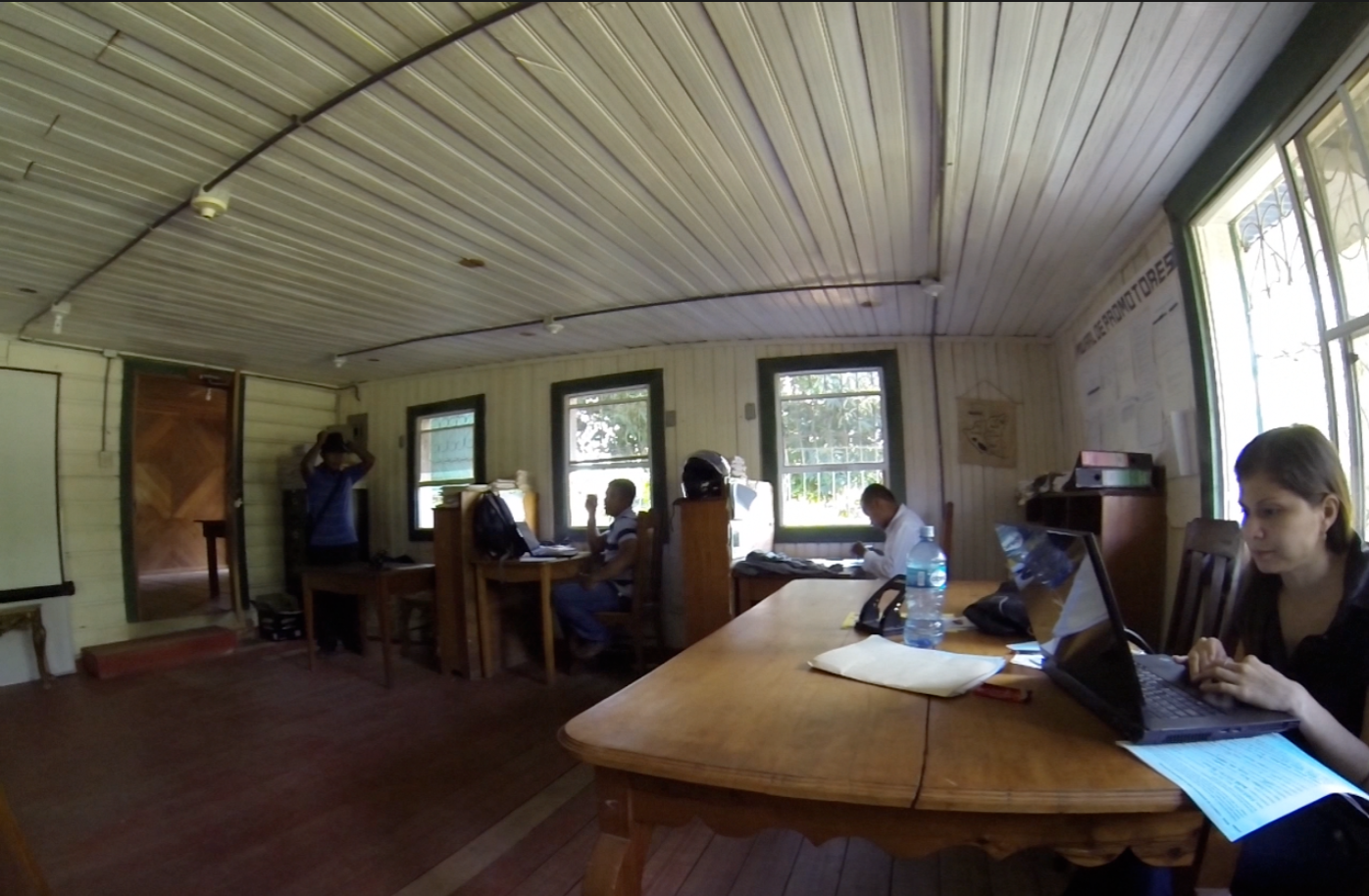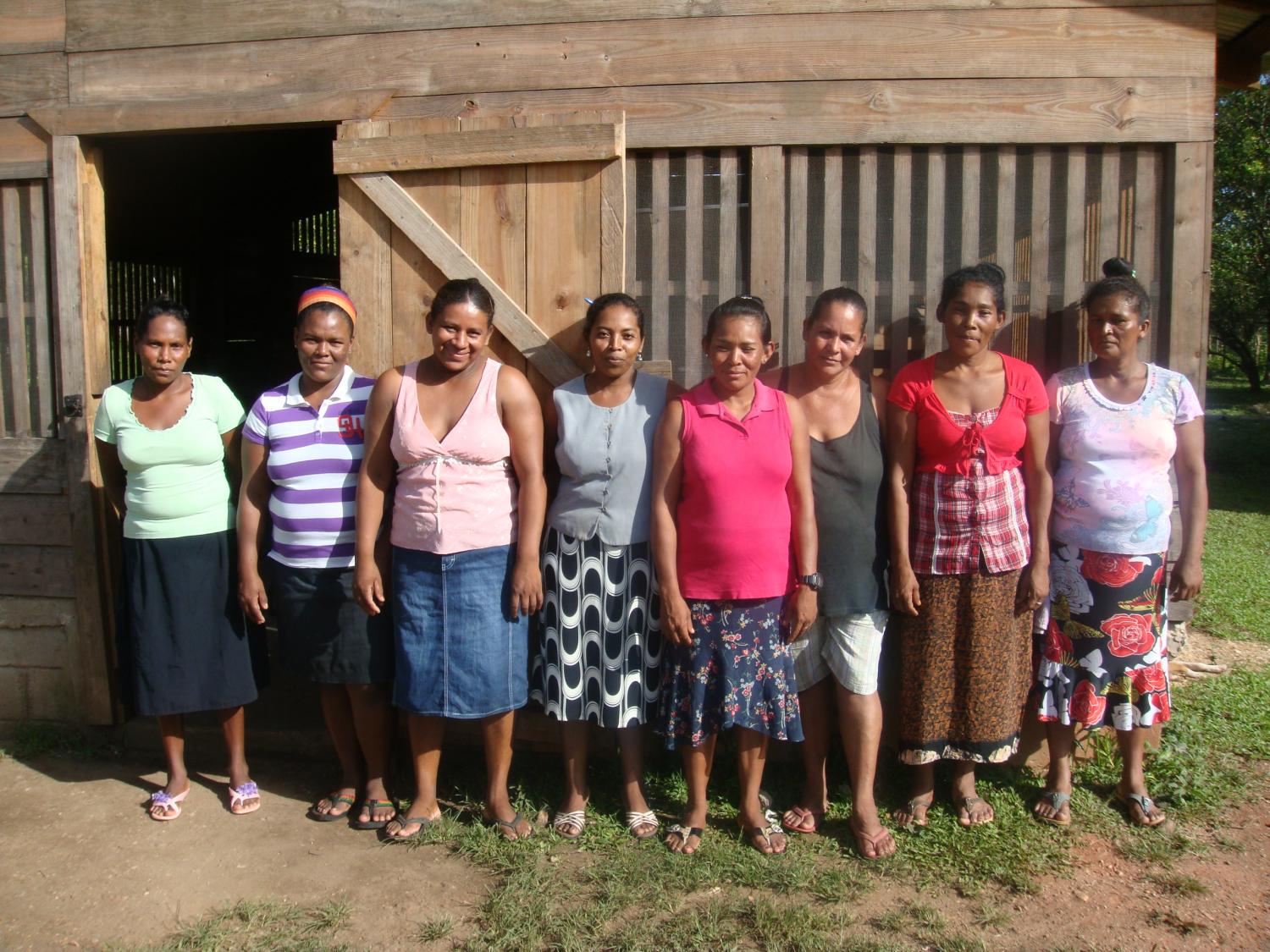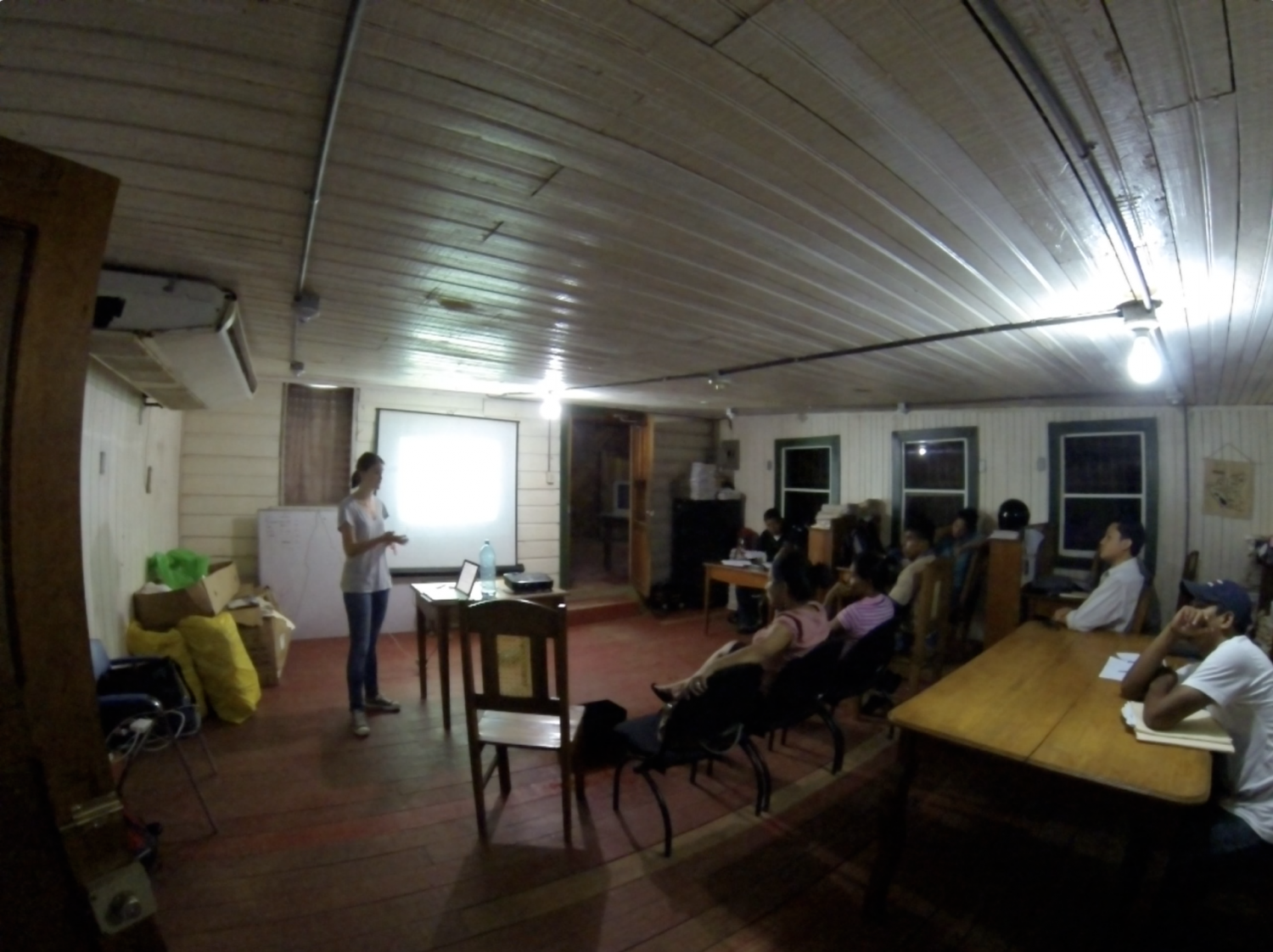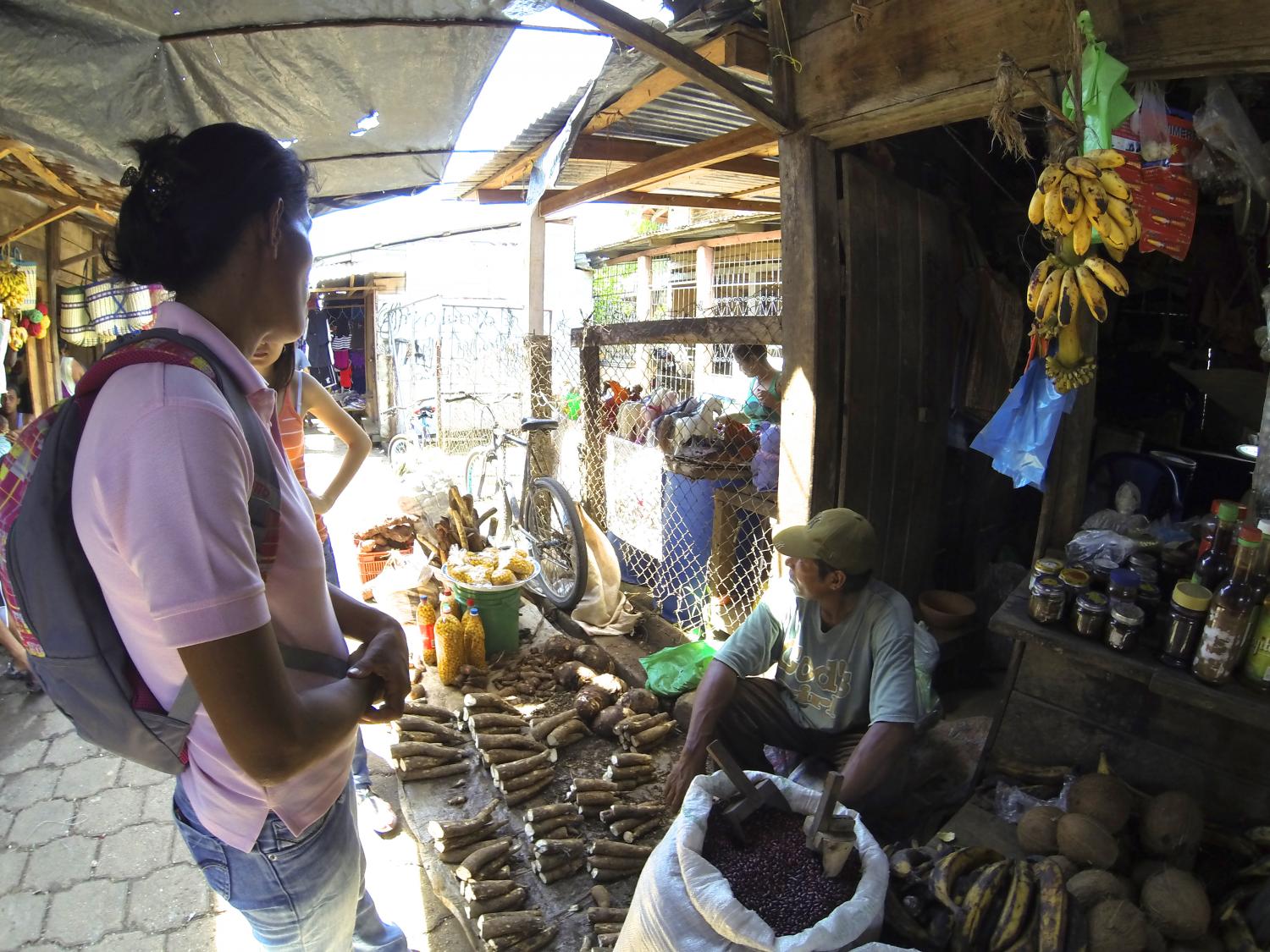
Loan officers are ambassadors in their communities; they are the liaisons between their employers, the Microfinance Institutes, and the borrowers. They are responsible for identifying responsible clients, ensuring they repay their loans on time, and fostering ongoing relationships with them. Inevitably, they are most in tune with the borrower’s behaviors and needs, which makes their work invaluable to the MFI’s performance.
It’s tough work. Pana Pana, the new MFI partner I work with in the North Atlantic Autonomous Region of Nicaragua, has 11 loan officers currently serving 2,378 clients from three branch offices. Each loan officer can have a portfolio of up to 400 clients, all with different repayment plans and schedules.
I have come to deeply respect Pana Pana’s loan officers. Before my work in the field, I studied the operational difficulties loan officers commonly face but hadn’t personally observed them. After accompanying them on borrower visits and witnessing their efforts first hand, I now recognize how complex and varying these obstacles can be.
I was still curious to know, however, how the loan officers would each respond when prompted to pinpoint their greatest challenge. So I asked the loan officers in the Puerto Cabezas office, where I’m based.
Unsurprisingly, most of the loan officers mentioned the process of identifying and soliciting suitable clients, a ubiquitous operational challenge in microfinance. Although some new borrowers visit the Pana Pana offices to directly request loans, many need to be sought out in the communities. Effective loan officers are charismatic, sociable self-starters that adopt a grassroots approach to recruiting clients. They rely heavily on word of mouth, asking existing clients or trusted members of the community to recommend potential borrowers that meet the MFI’s requirements.
In addition to providing proof of identification, Pana Pana clients must be employees of accredited businesses for at least one year or be the owners of their businesses for at least six months to be eligible. It can be challenging to track down clients that not only meet these prerequisites but can also afford the collateral costs of the loan, such as interest rates and transportation fees associated with repaying at the MFI offices monthly, biweekly, or even weekly. If a promising candidate is found, the loan officer must investigate his/her credit history and consult his/her acquaintances and neighbors for professional and personal references.
 Loan officers hard at work. From left: Jairo, Wesley, Fernando and Tania, the Kiva Coordinator at Pana Pana.
Loan officers hard at work. From left: Jairo, Wesley, Fernando and Tania, the Kiva Coordinator at Pana Pana.It was interesting to hear the loan officers explain the broad challenges of the process, but their individual anecdotes were definitely the most compelling. When I encouraged them to elaborate, many stressed the different social/cultural, personal and practical challenges of client recruitment. Ricardo, for example, highlighted the difficult task of reaching the people most in need of the MFI’s services: the poorest and most marginalized members in the communities.
The semi autonomous region of northeast Nicaragua has a predominantly indigenous population and is the most underdeveloped area in the country. This is due in part to its geographic isolation from established and prosperous cities near the Pacific and in part to the 1980s Sandinista revolution that ravaged the communities in the region.
Pana Pana, meaning ‘mutual help’ in the local Miskito language, was born out of this post civil war climate and aimed, as it still does, to serve the historically neglected communities by stimulating economic growth in the region. The organization has increasingly focused its attention on empowering female clients, whom, studies prove, are more likely to invest in their families’ basic needs than men and whose standing among men, especially within the household, significantly improves with income independence.
 A village bank group from Waspam, Nicaragua.
A village bank group from Waspam, Nicaragua. Ricardo’s clients are mostly members of village banks comprised of some of the poorest women in rural communities. Village banks are self-selected groups of individuals within a community forming to request a loan that they divide amongst themselves. They act as self-help groups for the women, wherein all members regularly deposit money into joint savings accounts, and are responsible for each other’s debts in the event that one of them defaults.
Unfortunately, as Ricardo mentions, many women do not work because their roles are still traditionally rooted within the household. They are financially entirely dependent on their husbands or fathers and rely on this head of household’s blessing in order to seek work or his help with the initial capital needed to set up a business. These barriers, along with the stigma associated with ambitious women in a macho society, prevent many disadvantaged women, especially in rural areas with low education rates, from benefiting from the micro-finance industry.
Ricardo is a reserved man in his early 30s who at first seems distant, but is actually very warm and helpful. Although he initially preferred working with uncomplicated individual clients in more accessible cities, he now highly values his work with the women in village banks. He recognizes how instrumental the loans from Pana Pana have been to the growth of their businesses and health of their families, and is disheartened by the exclusion of some women for social and cultural reasons.
Jairo, who does have more “straightforward” individual clients living in cities, stressed his personal challenges with the recruitment process, revealing both his inexperience in the field as much as his professional drive. He is one of the youngest at 27 years old, most are in their 30s, and has only been working as a loan officer for 5 months. Yet, he currently has the largest portfolio of clients.
 Presenting to the Pana Pana loan officers and administrative staff (Jairo is on the far left, and Ricardo is on the far right).
Presenting to the Pana Pana loan officers and administrative staff (Jairo is on the far left, and Ricardo is on the far right). Of his colleagues, he was the only one to emphasize the importance of good personal instincts to pick potential clients. Because he inherited a portfolio of borrowers from a previous employee, he is trying to develop trusting relationships with the existing clients, which has made it difficult to connect with new ones. A gregarious and erudite guy, he is eager to prove himself to the veteran loan officers and management and questions his instincts when obstacles impede or slow him down.
He believes instincts play a particularly critical role when discerning which prospective clients are addicted to illegal drugs. Puerto Cabezas has experienced an increase in drug trafficking due to its proximity to Honduras, remoteness, and relative autonomy. When drug traffickers travelling by boat are at risk of being apprehended, they dump their drugs overboard and these drugs inevitably end up on the shore for locals to discover, sell, or use. These drug smugglers have realized it can be in their best interest to hook the local populations on drugs in order to more easily trade their illicit merchandise for products they might need in transit.
Consequently, Jairo estimates as much as a quarter of the population could be addicted to drugs, including educated professionals such as doctors. Pana Pana maintains a zero tolerance policy for drug use among its borrowers, for obvious reasons, and therefore puts pressure on its loan officers to ensure their clients are clean. As the problem is widespread, even afflicting some of the most accomplished members of the community, possessing superior instincts and trusting those instincts can be challenging. Jairo, however, shouldn't be too worried; he and his colleagues have largely experienced success with the screening process.
On the other hand, Sofia, a hilarious, mothering veteran loan officer originally from Managua, focuses on the more practical challenges of seeking new borrowers. Laughing heartily, she divulged that, although she has been working with Pana Pana for 5 years, she is still afraid of driving her motorcycle in Puerto Cabezas. I don’t blame her; drivers in Puerto seem to have abandoned traffic rules long ago, if they were ever implemented. They drive on the wrong side of the road if it means avoiding one of many potholes and swerve aggressively to avoid crossing dogs or pedestrians nonchalantly stopped in the street. So I sympathize when Sofia explains she avoids driving as much as possible, but I also know easily maneuvering around the city to visit clients is crucial.
 Sofia (far right) and Tania with the clients from one of Sofia's solidarity groups.
Sofia (far right) and Tania with the clients from one of Sofia's solidarity groups. As I commiserated with her over my own fears of being a passenger in Puerto, she added, giggling and slightly embarrassed, that she doesn’t speak Miskito either. This revelation shocked me even more as I had visited a few dozen borrowers myself by this time and frequently needed a loan officer to translate my Spanish into Miskito for confused clients. “You don’t speak Miskito after 5 years in Puerto?! How do you communicate with all your borrowers?” I teased kindly, but I was seriously curious how she had managed her portfolio for half a decade without speaking the local language.
“Most of my clients speak Spanish and, when they don’t, I find the closest person that does to translate,” she said with a mischievous smile, “but sometimes that can take some time.” I was both amused and kind of impressed with her unapologetic self-assuredness. Although she listed it as a challenge, it doesn’t seem to bother her or affect her work enough to finally learn Miskito.
Beyond recruiting clients, many of the loan officers also mentioned challenges associated with maintaining good relationships with the borrowers.
Fernando, the wise and older loan officer told me his greatest concern is to provide the best quality service to his clients in order to grow his portfolio.
Jenny, confident and outspoken in her mid 30s, wishes the organization had more funds to provide greater incentives to loyal model clients.
 Waleska with a client.
Waleska with a client. Waleska, a young mother, warns to stay on top of even the most diligent clients who may respect their repayment plans at first but can easily fall behind schedule when “left unattended too long.”
Some of the loan officers also adjust their behavior and tone when addressing borrowers. Although Jenny and Sofia experience the most success when they are friendly and close to their clients, Jairo and Ricardo admit they adopt a stricter I’m-not-your-friend, I’m-your-loan-officer attitude. They say maintaining this strategy ensures their clients understand that loans are not a handout and that loan officers cannot be manipulated into relaxing repayment plans.
One thing the loan officers do have in common, however, is they all love what they do. As challenging or frustrating as their jobs can be, it is evident that their work is both professionally and personally fulfilling. As different as their struggles or they themselves might be, their desire to make a social impact by helping people help themselves connects them and is what makes Pana Pana such a success.
I have loved working with them and look forward to following their progress after my departure.
Please help them keep doing this incredible work and make a loan with Pana Pana at Kiva.org today.
PREVIOUS ARTICLE
More Than A Job →NEXT ARTICLE
Mobile technology: Interactuar's newest project in Colombia →













